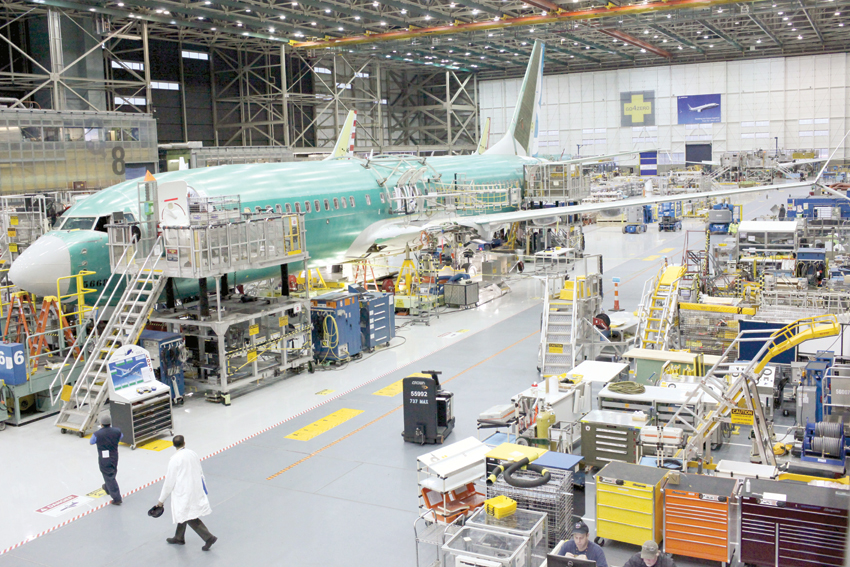

WASHINGTON: US factory activity accelerated to a five-month high in November amid a pickup in new orders and production, offering more evidence that the economy gained further momentum early in the fourth quarter.
While other data on Thursday showed the number of Americans claiming unemployment benefits hitting a five-month high last week, labour market strength remains intact, with layoffs falling 12 per cent in November.
The Institute for Supply Management (ISM) said its index of national factory activity rose 1.3 percentage points to a reading of 53.2 last month, the highest since June. A reading above 50 indicates an expansion in manufacturing, which accounts for about 12 per cent of the US economy.
The production sub-index increased 1.4 percentage points and a gauge of new orders rose 0.9 percentage point. A measure of factory employment, however, fell 0.6 percentage point. Still, manufacturing employment remained above expansion territory.
The report added to data on consumer and construction spending that have suggested the economy continued to gain strength in the fourth quarter after growing at a 3.2 per cent annual rate in the July-September quarter, the fastest in two years.
Manufacturing is slowly regaining its footing as some of the drag from the dollar’s past rally eases and oil prices continue to stabilize after last year’s collapse.
Gains in factory activity are, however, likely to be modest amid renewed strength in the dollar following the election of Donald Trump as the next president.
Since the November 8 election, the dollar has surged more than 4 per cent against the currencies of the United States’ main trading partners as investors viewed the president-elect’s proposed fiscal policy as inflationary.
A strong dollar is bad for exports and will squeeze profits of multinational corporations, which could have an impact on their capital spending budgets.
But Trump’s plan to increase infrastructure spending could offer some boost to manufacturing and benefit heavy machinery makers such as Caterpillar, whose profit has been hurt by poor demand for construction equipment.
In a separate report on Thursday, the Labour Department said initial claims for state unemployment benefits increased 17,000 to a seasonally adjusted 268,000 for the week ended November 26. That was the highest reading since June and marked the second straight week of increases.
Despite the increase, claims remained below the 300,000 threshold, which is associated with a healthy labour market, for the 91st straight week. That is the longest run since 1970, when the labour market was much smaller.
The dollar was trading lower against a basket of currencies after the claims report. Prices for US government bonds also fell, while US stocks rose.
Jobless claims, which hit a 43-year low in mid-November, tend to be volatile at this time of the year as the model the government uses to strip out seasonal fluctuations from the data does not fully account for changes in the timings of different holidays.
“We do not think the recent swings in the claims data represent rapid changes in underlying labour market conditions,” said Daniel Silver, an economist at JPMorgan in New York.
The four-week moving average of claims, considered a better measure of labour market trends as it irons out week-to-week volatility, edged up 500 to 251,500 last week. Last week’s claims data has no bearing on November’s employment report, which is scheduled for release on Friday, as it falls outside the survey period.
New filings for jobless benefits fell between the October and November survey weeks, supporting expectations for another month of solid employment gains. According to a Reuters survey of economists, nonfarm payrolls probably increased by 175,000 jobs last month after rising 161,000 in October. — Reuters
Oman Observer is now on the WhatsApp channel. Click here



